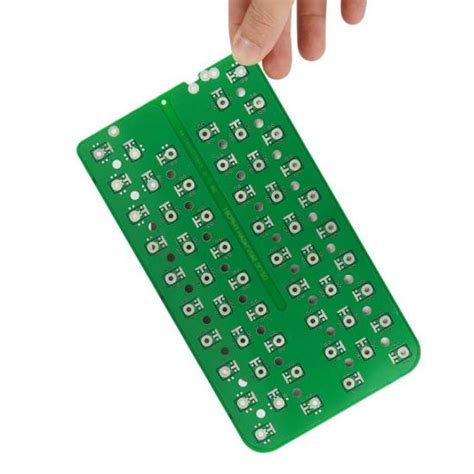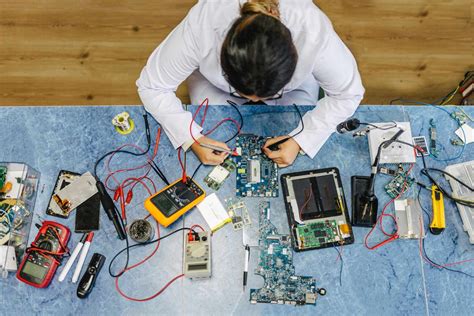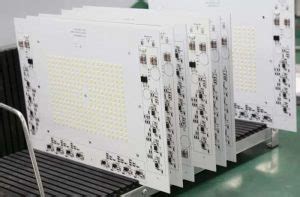Affordable Low-Volume PCB Prototyping Services

Key Takeaways
When exploring PCB manufacturing for prototypes or small-batch projects, understanding your priorities is critical. Affordable low-volume PCB prototyping services cater to orders of 1-5 units, making them ideal for hobbyists, startups, or teams testing early-stage designs. The PCB manufacturing cost for such projects often depends on material choices, layer count, and turnaround time. Reputable PCB manufacturing companies optimize processes to reduce overhead, passing savings to customers without compromising reliability.
Tip: To minimize expenses, simplify your design (e.g., reduce layers) and verify Gerber files thoroughly before submission to avoid costly revisions.
Balancing speed and affordability is key. While faster turnaround times may increase PCB manufacturing business fees, some providers offer tiered pricing to accommodate tight budgets. Prioritize manufacturers that specialize in low-quantity orders—they’re more likely to streamline workflows for small batches. Additionally, consider assembly costs early; some services bundle fabrication and assembly, saving time and logistics hassles. By aligning your needs with the right provider, you can achieve high-quality prototypes without overspending.

Understanding Low-Volume PCB Prototyping Needs
When you’re developing a new electronic product or testing a design iteration, PCB manufacturing for small batches becomes critical. Low-volume prototyping—typically 1–5 units—is tailored for scenarios where full-scale production isn’t yet viable, such as validating functionality, refining layouts, or preparing for investor demonstrations. For hobbyists, startups, or engineers working on early-stage prototypes, this approach minimizes upfront PCB manufacturing cost while ensuring flexibility to iterate quickly.
Affordable PCB manufacturing companies specialize in balancing quality and affordability for these small orders. Unlike high-volume production, which prioritizes economies of scale, low-volume services focus on optimizing processes like material selection, layer count, and panelization to keep costs manageable. For example, opting for standard FR-4 substrates instead of specialized materials or reducing the number of drilled holes can significantly lower expenses. Speed is another priority—many providers offer turnaround times as short as 24–48 hours for prototypes, ensuring you meet tight development deadlines without overspending.
However, navigating the PCB manufacturing business for low-volume orders requires careful planning. Submitting precise Gerber files, avoiding overly complex designs, and clarifying tolerances upfront help prevent delays or rework costs. Some manufacturers also bundle assembly services, allowing you to test fully functional boards early in the design cycle. If you’re unsure where to start, platforms like Andwin PCB provide transparent pricing and support for small-batch projects, making it easier to align your prototype’s requirements with budget constraints.
Ultimately, low-volume prototyping isn’t just about saving money—it’s about iterating efficiently while maintaining reliability. By partnering with a manufacturer experienced in handling 1–5 unit orders, you ensure your design is production-ready before scaling up. This approach reduces risk, accelerates time-to-market, and keeps your project agile in competitive markets.
Key Features of Affordable PCB Prototyping Services
When searching for PCB manufacturing solutions tailored to small-batch needs, affordability and flexibility are critical. Reputable PCB manufacturing companies specializing in low-volume orders (1–5 units) prioritize cost efficiency without compromising quality. Here’s what sets these services apart:
- Scalable Pricing Models: Unlike traditional high-volume production, low-volume PCB manufacturing cost structures eliminate bulk-order dependencies. You pay only for the units you need, reducing upfront expenses. Many providers offer tiered pricing, ensuring even smaller batches stay within budget.
- Rapid Turnaround: Speed is essential for prototyping. Leading services streamline processes like design verification and fabrication, delivering boards in as little as 24–72 hours. This agility supports iterative testing, helping you refine designs faster.
- Design Support: To minimize errors, some companies provide free DFM (Design for Manufacturability) checks. This ensures your Gerber files meet production standards, avoiding costly revisions.
- Material and Layer Flexibility: Whether you need standard FR-4, high-frequency substrates, or multilayer configurations, low-volume specialists accommodate diverse requirements. This adaptability is ideal for testing different design approaches.
| Cost Factor | Traditional PCB Manufacturing | Low-Volume PCB Manufacturing |
|---|---|---|
| Setup Fees | High (amortized over large batches) | Low or waived for small orders |
| Material Sourcing | Bulk discounts | Optimized for minimal waste |
| Lead Time | 2+ weeks | 1–5 days |
| Design Support | Limited | Included in base pricing |
For hobbyists or startups, managing PCB manufacturing business expenses is easier with transparent quotes and no hidden fees. Look for providers offering instant online calculators to estimate costs based on board size, layers, and finishes. By focusing on simplified workflows and dedicated small-batch expertise, these services ensure your prototypes meet quality benchmarks while staying budget-friendly.

Top Manufacturers for 1-5 Unit PCB Orders
When searching for PCB manufacturing services tailored to small-batch needs, you’ll want to prioritize companies that specialize in low-volume orders without compromising quality or inflating PCB manufacturing cost. Several PCB manufacturing companies stand out for their ability to deliver 1-5 unit prototypes efficiently, combining affordability with reliable output. These providers often streamline their processes to cater specifically to hobbyists, startups, or engineers testing early-stage designs, ensuring you pay only for what you need.
Look for manufacturers offering tiered pricing models, where costs decrease marginally as order quantities increase—even within the 1-5 unit range. This flexibility helps balance speed and budget, especially if you’re iterating designs rapidly. Reputable PCB manufacturing business operators also provide transparent quotes upfront, detailing material choices (like FR-4 or flexible substrates), layer counts, and surface finishes that impact final pricing. For instance, opting for standard specifications over premium add-ons can significantly reduce expenses without sacrificing functionality.
Additionally, many low-volume-focused PCB manufacturing services integrate user-friendly platforms for submitting Gerber files, automating design checks to prevent costly errors. This minimizes delays and ensures your prototypes meet specifications on the first attempt. Some companies even bundle assembly services for an extra fee, simplifying the transition from bare boards to functional prototypes. By focusing on manufacturers that emphasize rapid turnaround (often 24-72 hours), you can accelerate testing phases while keeping PCB manufacturing cost manageable.
Ultimately, the goal is to partner with a provider that aligns with your project’s scale and complexity. Prioritize those with proven expertise in low-volume PCB manufacturing, robust customer support, and clear communication channels to address any design adjustments swiftly. This approach ensures your prototypes are both cost-effective and production-ready, laying a solid foundation for future scaling.

Cost Comparison: Budget-Friendly PCB Production Options
When evaluating PCB manufacturing costs for small-batch projects, you’ll want to prioritize transparency and scalability. Many PCB manufacturing companies structure pricing based on order volume, material choices, and design complexity. For low-volume PCB manufacturing (1-5 units), costs per board are typically higher than mass production due to setup fees, but specialized services offset this by streamlining processes for prototypes. For example, opting for standard FR-4 substrates and minimizing layer counts (e.g., 2-4 layers) can reduce PCB manufacturing cost without compromising functionality.
Comparing quotes across providers reveals significant differences. Some companies charge flat rates for prototyping, while others use tiered pricing tied to board size or technology requirements. Look for suppliers that offer design-for-manufacturing (DFM) checks at no extra cost—this ensures your Gerber files meet production standards early, avoiding delays. Additionally, panelization (grouping multiple designs on a single panel) can further lower expenses, though this depends on the PCB manufacturing business model.
Hidden fees, such as tooling charges or expedited turnaround surcharges, can inflate budgets. Always clarify whether these are included upfront. For instance, a $50 setup fee might seem steep for a 5-unit order, but if it covers unlimited design revisions, it becomes a value-add. Balancing speed and affordability is key: standard lead times (5-7 days) often cost 30-50% less than rush services.
Finally, consider long-term scalability. While prototyping costs matter, partnering with a PCB manufacturing partner that supports seamless transitions to higher volumes ensures consistency in quality and pricing as your project evolves. By analyzing these factors, you can optimize spending without sacrificing reliability—even in the earliest stages of your PCB manufacturing journey.
Streamlining Gerber File Submissions for Small Batches
When working with PCB manufacturing companies for low-volume orders, submitting Gerber files correctly is critical to avoid delays and unexpected PCB manufacturing costs. Most providers specializing in PCB manufacturing business for prototypes prioritize user-friendly processes, offering online platforms where you can upload files, specify layer counts, and confirm design parameters in minutes. To streamline submissions, ensure your Gerber files adhere to design for manufacturability (DFM) guidelines—such as clear copper-to-edge spacing and verified drill hole alignments—to minimize back-and-forth revisions.
Many affordable PCB manufacturing services now include automated file checks, flagging potential issues like missing layers or incompatible apertures before production begins. For 1-5 unit orders, this pre-validation step is invaluable, as it reduces the risk of costly errors while maintaining tight budgets. Additionally, some manufacturers provide templates or design rule checks (DRCs) tailored to small-batch needs, helping you optimize layouts for cost efficiency without sacrificing reliability.
By collaborating closely with your chosen PCB manufacturing partner, you can refine file submissions to align with their specific workflows, further accelerating turnaround times. Clarify requirements like solder mask colors or surface finishes upfront, as these details influence both PCB manufacturing cost and lead times. Transparent communication ensures your prototype aligns with technical capabilities, balancing speed and affordability for early-stage projects.

Turnaround Time vs. Cost: Balancing Speed and Affordability
When ordering PCB manufacturing for prototypes or small-batch projects, balancing speed and cost becomes critical. Most PCB manufacturing companies prioritize either rapid delivery or budget-friendly pricing, but finding a service that optimizes both requires careful consideration. For low-volume orders (1-5 units), faster turnaround times often come with higher PCB manufacturing cost, as expedited production may involve additional labor, specialized machinery, or priority scheduling. However, some providers offer tiered pricing models—letting you choose standard lead times (e.g., 5-7 days) for affordability or pay a premium for 24-48 hour delivery if deadlines are tight.
To minimize expenses, evaluate whether your project truly needs accelerated production. For early-stage prototypes, opting for standard lead times can reduce PCB manufacturing business overhead while still ensuring reliable quality. Additionally, simplifying your design (e.g., fewer layers, standard materials) and streamlining Gerber file submissions can lower costs further. Reputable manufacturers often provide design-for-manufacturability (DFM) feedback to help avoid rework fees, which is especially valuable for small batches.
Keep in mind that volume discounts rarely apply to ultra-low quantities, so focus on providers that specialize in PCB manufacturing for 1-5 units. These companies typically structure their pricing to reflect smaller scales without inflating per-unit costs disproportionately. Comparing quotes across multiple vendors ensures you’re not overpaying for speed or features you don’t need. Ultimately, aligning your timeline with realistic budget expectations ensures you get functional prototypes quickly without compromising your project’s financial feasibility.
Tips for Minimizing Expenses in Prototype PCB Fabrication
When ordering low-quantity PCB manufacturing for prototypes, every dollar counts. Start by optimizing your design for manufacturability—simplifying layer counts, avoiding tight tolerances, and using standard materials can reduce PCB manufacturing costs significantly. Many PCB manufacturing companies charge premiums for custom specifications, so sticking to their default options helps keep budgets in check. For instance, choosing FR-4 over specialty substrates or standard finish types like HASL instead of ENIG can lower expenses without compromising functionality.
Next, consider panelizing your design if you’re ordering multiple prototypes. This allows you to fit several boards into a single production panel, maximizing material usage and reducing waste. However, confirm with your supplier whether they charge extra for depaneling, as this could offset savings.
Another strategy is to prioritize PCB manufacturing businesses that specialize in small batches. These providers often offer tiered pricing for 1–5 units, with discounts for repeat orders or bundled services like assembly. Comparing quotes from multiple vendors ensures you’re not overpaying for features you don’t need.
Streamline your Gerber file submissions to avoid delays or rework fees. Double-check files for errors like missing layers or mismatched drill files, as even minor mistakes can lead to costly revisions. Some manufacturers provide free design reviews, which can catch issues early.
Finally, balance turnaround time against cost. While faster shipping or expedited production might seem appealing, standard lead times are usually the most budget-friendly. Plan ahead to avoid rush fees, and communicate clearly with your supplier about flexibility in deadlines. By aligning your priorities with the capabilities of PCB manufacturing partners, you can achieve reliable quality without overspending on early-stage prototypes.
Navigating Assembly Costs for Early-Stage Prototypes
When ordering PCB manufacturing for early-stage prototypes, managing PCB manufacturing cost becomes a critical concern. Unlike mass production, low-volume orders (1-5 units) often face higher per-unit expenses due to setup fees, component sourcing, and labor. However, partnering with PCB manufacturing companies specializing in small batches can help mitigate these costs. Look for providers that offer flexible assembly options, such as partial panelization or shared material usage, to reduce waste and optimize pricing.
One effective strategy is to prioritize PCB manufacturing business models that align with prototyping needs. For instance, some manufacturers waive tooling fees for orders under 10 units, while others provide discounted rates for repeat customers. Ensure your Gerber files are meticulously prepared to avoid redesign charges—errors in layer alignment or drill holes can inflate costs unexpectedly. Additionally, consider using standard components instead of custom parts, as availability and lead times directly impact assembly expenses.
Transparency is key. Reputable PCB manufacturing services break down costs for materials, labor, and testing, allowing you to identify areas to trim expenses. For example, opting for surface-mount technology (SMT) over through-hole components can lower labor costs without compromising quality. If your design permits, discuss panel-sharing opportunities with the manufacturer, where multiple prototypes are grouped on a single board to split fabrication fees.
Finally, balance speed and affordability. While faster turnaround times are tempting, they often come at a premium. If timelines allow, choose standard lead times to keep PCB manufacturing cost manageable. By aligning your priorities with the capabilities of low-volume-focused PCB manufacturing companies, you can achieve reliable results without overspending—even at the earliest stages of development.
Conclusion
When seeking PCB manufacturing solutions for low-volume projects, choosing the right service provider ensures your prototypes meet technical and budgetary goals. Affordable low-volume PCB prototyping services cater specifically to 1-5 unit orders, making them ideal for testing designs without overspending. Reputable PCB manufacturing companies often prioritize fast turnaround times while maintaining quality, allowing you to iterate quickly during early development stages. By focusing on PCB manufacturing cost efficiency, these services eliminate the financial barriers traditionally associated with small-batch production.
To optimize expenses, consider how design choices—such as layer count and material selection—affect overall PCB manufacturing business pricing. Streamlined Gerber file submissions and clear communication with manufacturers further reduce errors and delays. While balancing speed and affordability, remember that reliability remains critical; even budget-friendly options should adhere to industry standards. Whether you’re a hobbyist or a startup, leveraging specialized PCB manufacturing services for prototypes ensures you can validate concepts cost-effectively before scaling production. Ultimately, the goal is to align your project’s needs with a provider that offers transparency, flexibility, and value-driven solutions for small batches.
FAQs
What defines a reliable low-quantity PCB manufacturer?
A reliable PCB manufacturing company prioritizes transparent pricing, fast turnaround times, and clear communication for small-batch orders. Look for providers specializing in PCB manufacturing cost optimization for 1-5 unit projects, ensuring no compromise on quality.
How do PCB manufacturing costs vary for 1-5 unit orders?
Costs depend on material selection, layer count, and design complexity. Reputable PCB manufacturing businesses offer tiered pricing, reducing per-unit expenses through shared panelization or standardized processes tailored for prototypes.
Can I get fast turnaround times without sacrificing quality?
Yes. Many PCB manufacturing services streamline prototyping workflows, offering 24-72 hour production for simple designs. Confirm lead times upfront and ensure your Gerber files are error-free to avoid delays.
What design tips reduce expenses for small-batch PCB orders?
Minimize layers, avoid ultra-tight tolerances, and use standard materials. Partnering with PCB manufacturing companies that offer design-for-manufacturing (DFM) feedback helps identify cost-saving adjustments early.
Is assembly included in low-volume prototyping services?
Some providers offer integrated assembly, but costs add up quickly. For early-stage prototypes, focus on PCB manufacturing first. If assembly is critical, clarify pricing for partial or full service upfront.
How do I ensure my Gerber files are submission-ready?
Use industry-standard software to generate files, verify layer alignment, and include a detailed fabrication drawing. Most PCB manufacturing businesses provide online checklists or automated file validation tools.
Explore Affordable Prototyping Solutions Today
Ready to streamline your next project? Click here to connect with a trusted partner specializing in low-volume PCB manufacturing tailored for prototypes and hobbyists.







